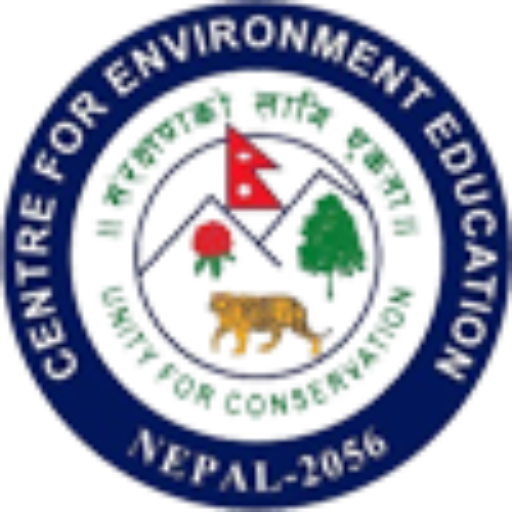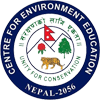With the experience from education program in community schools, with support from Helvetas Intercooperation Nepal, the CEEN launched a four year pilot Climate Change Adaptation Education Program in 13 schools of Ramechhap and Sindhupalchok district, between June 2011-June 2015. The same was extended to two schools in Dailekh, as an education support to the WARM-P project of Helavetas, and with one school in Rupendehi district with River Bed Farming of Helvetas Nepal. Please follow the link: https://www.facebook.com/ceen1999/videos/1548525691833058/ to watch the documentary on the project.
The brief project report is as follows:
Climate Change Adaptation: Education to Action!
Background
Environmental issue today is a global issue, faced by everyone. Among all, today climate change has become the main agenda in any global environmental forum. Climate change impacts are felt more in countries where the people are illiterate, poor and live in vulnerable places. Unfortunately Nepal falls in one of the most vulnerable areas of this planet. Hence, Nepal is ranked 4th in terms of environmental vulnerability among all the countries of the world (IPCC). Situated in the southern slopes of the great Himalayan range, Nepal has started facing catastrophic incidents where lives of hundreds are lost every year with heavy losses on property, land and cattle. These types of incidents never seem to reduce and lessen, but every day we are beginning to face new challenges. The government of Nepal, following IPCC mandatory policy, has begun its task of addressing this grave issue at two levels. At the national level, it has framed the National Adaptation Plan of Action (NAPA), another at VDC level named as Local Adaptation Plan of Action (LAPA).
Although Nepal has a very little global share in terms of carbon emission (0.025%)-(IPCC), yet it has to face all the hard times due to the carbon and other green house gas emitted by rich, developed and industrialized nations. Therefore, there is no full justice on Nepal’s efforts for any mitigation measures. The only choice left for Nepal is to increase the capacity of the people to adapt to the changed situation and to increase their resilience. Efforts by government and I/NGOs to this effect is expected to take long. Thus, climate change today has become the greatest global challenge in the history of mankind.
Project context
In order to address this grave issue in an integrated manner, using local schools as entry points to reach out the communities, Helvetas Swiss Intercooperation Nepal started a pilot project in June 2011 that ended in June 2015. The project was jointly conceived with Centre for Environment Education Nepal (CEEN), as the latter had gained a good experience on this kind of approach. The main goal of the project was “to provide a model of increased resilience to the negative impacts of climate change among rural population in the working districts of Helvetas Swiss Intercooperation with two basic objectives; educating young people (students) to take active roles in improving the adaptive capacity of the community and take action on climate change awareness and adaptation; and sensitizing local farmers at risk to become aware of climate risks and opportunities, plan and adopt measures to increase their adaptive capacity against climate vulnerability and hazards. In this the students were expected to become keen observers of local problems and issues, analysers of situations and risks; designers and implementers of projects; participants in community decision-making and development; communicators of risks, their causes and management options; mobilisers of resources and people; constructors of social networks.
The CEEN was given the responsibility to implement this project. Hence, Ramechhap district was chosen for piloting the project, being the nearest among the three working districts of Helvetas in eastern cluster, where three schools and communities were selected after consultation with district education officials and respective schools. Nilkantheshowr HS School in Kathajor VDC, Buddha Janapriya MaVi and Jhatteshowr HS School at Dhobi in Nagdaha VDC piloted this project from August 2011.
Approach
The teachers teaching Science, Social Studies, Environmental, Population and Health (EPH), English and Nepali from these selected schools were trained to extend the relevant lessons from these subjects, and encouraged the students to investigate and explore the past environmental condition with that of the present, thereby enabling them to perceive the possible future trends on rainfall patterns, water sources, flowering time, sowing and harvesting time, appearance and disappearance of birds, plants, flowers, along with incidents of different hazards like hailstorms, floods, landslides, epidemics, etc. The teachers were able to identify different lessons from different subjects, including economics, and thus, planned the lessons connecting climate change issues. The teaching, which otherwise remained as normal chalk and talk method, became more active with children asking their parents, grandparents and elder members in the community about the different changes taking place over the last 30-40 years. This finding was used as the main theme for any co/extra-curricular activities at schools to create climate change awareness among the school family and public. The children prepared songs, poetry, theatre and campaigning strategies (with professional coaching), mock-assembly, deusi/bhailo and also organized other cultural activities at schools and public places.
In the meantime, the selected community members (normally members of Community Learning Centres and Community Awareness Centres (CLC/CAC), and other existing institutions) from the school vicinity were selected for sensitization and adaptation planning. Effort was made to select the farmers who were the members of these grass root institutions who also had their children at the local school in classes VI-IX, but this assumption did not really work out.
Planting time of millet
The students at Jhatteshor HS School in Dhobi, Ramechhap, during their micro-project, undertook investigation into changes in the planting time for millet over a 5-year period. It seemed to show that weak monsoons (when rainfall is lower) are also late monsoons. Millet is planted late when the monsoon is late. If planted after a certain date the crop yield will be poor. This is an interesting relationship and raises the possibility of using the timing of millet planting as an accurate gauge of monsoon strength. The graph they prepared was also a clear indication of how recent drought years have badly affected a key crop such as millet leading to food shortage and family debt.
The experience from Ramechhap was replicated to one school in Sindhupalchok in 2012. The active participation of the school at Sindhupalchok encouraged the COPILA team to increase the number to eight in 2013 and nine in 2014. Hence, there were altogether 13 schools/communities implementing COPILA until the end of the project (June end, 2015) in Ramechhap and Sindhupalchok. Besides, with the support from WARM-P, teachers from two schools in Dailekh were also trained on COPILA approach, where water and climate change were the foci. Moreover, with coordination with Riverbed Farming project of Helvetas, teachers and students received workshop and orientation of climate change and its integration/extension in different subject areas.
Achievements
Environmental Education and Education for Sustainable Development (EE/ESD) is based on five learning principles, triggering from ‘Awareness’ to ‘Knowledge and Understanding’, to ‘Attitudinal Change’, to ‘Skills Development’ and finally leading to ‘Action’. Project COPILA (Community Practice in School for Learning Climate Change Adaptation) was based on this principle and the principle of Climate Change Education for Sustainable Development (CCESD) as endorsed by UNESCO. However, the result of this approach is not quick to see and feel, but sustainable in a longer term.
The recipients take a longer time to be aware and to understand the complexity of the climate change concept. However, as the project matured, they began internalizing this. Once internalized, they began to take action. Hence, as expected, we have begun to see some actions in schools and communities where the project was first launched.
The students in few schools have begun doing some small actions at their household. A student in Nagdaha, Ramechhap, having participated in the program, showed the COPILA team that he had used a small pipe to collect waste water to be used in vegetable garden. He had convinced his mother to wash clothes within the garden so that the waste water is used for the plants.
Similarly, some children in few schools in Sindhupalchok have initiated their own child clubs within their community for environmental care, sanitation and hygiene. They said in the beginning their parents were adamant to hear anything about climate change, but now they are beginning to respond to their queries, and link the activities of other similar projects with climate change.
Through the theatre workshop, most of the students, who otherwise were introvert, have begun to come forward and organize and participate actively in climate change awareness activities. Selected students also participated in the adaptation planning workshop where they presented their findings and voiced their opinion. In the adaptation workshop at Manthali, the students of Nagkanya presented their findings where they clearly showed the relationship between rainfall pattern and paddy plantation.
At Palchok, the students of Jay Bageshory performed Climate Change deusi in which they raised Rs. 64000/-. This money was used for an environmental trip to Ilam, Jhapa and Janakput. The children collected a lot of information also compared the ecological differences among all these places. They have been assigned to write a report from a climate change perspective. This encouraging activity was shared by the teacher in the meeting, which has generated similar kinds of plans among other schools in the future.
The weather station at Nilakantheshowr school, Kathajor school is properly used and the rainfall and temperature data is analyzed and disseminated to the school and public. Except in few schools, where recently the teachers have left for permanent posts elsewhere, awareness activities went on smoothly. The C activities are institutionalized in child clubs and formation of eco/climate clubs.
“When I asked Jhakendra Budathoki about farming on which I did a micro-project, he said that in the past the land yielded plenty of crops, and everyone got interested to work in the fields. Due to poor and untimely rainfall these days, and water sources dried up, the yield is not even enough for six months. That’s the reason why everyone is leaving the village and migrating to towns. With population increase and crop yield decrease, some people have also resorted to anti-social activities for their livelihoods”

